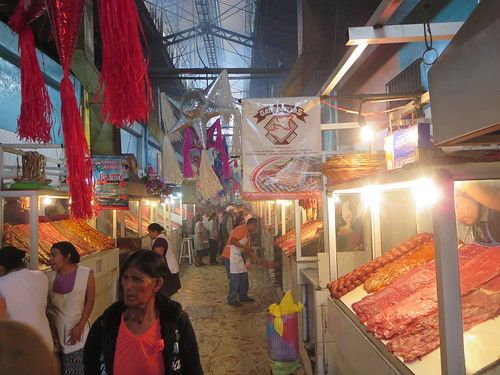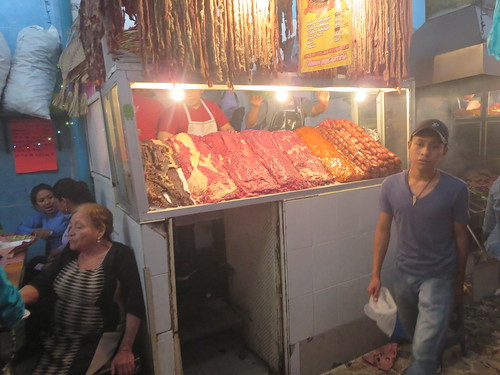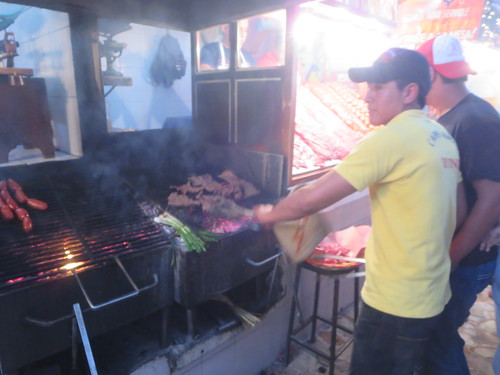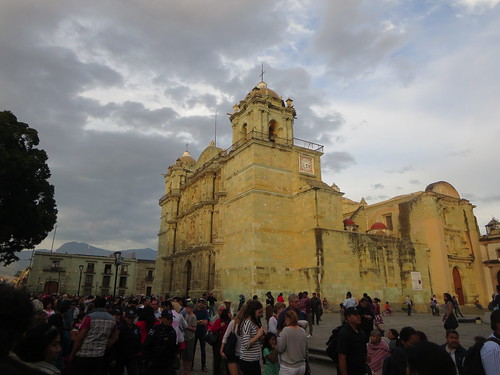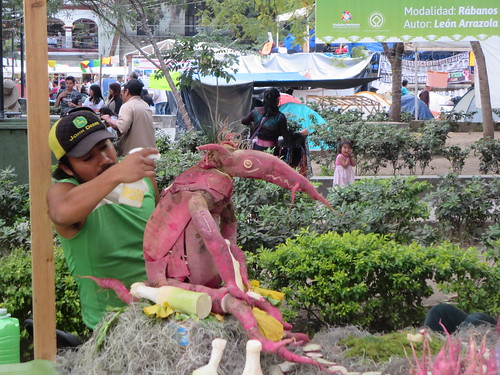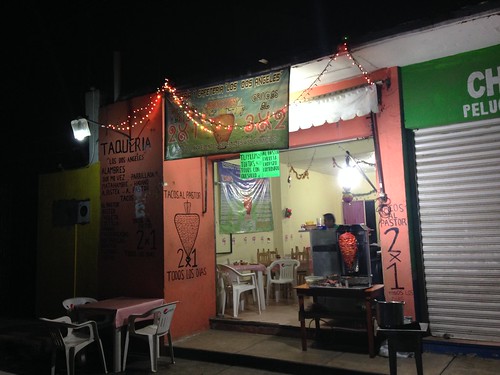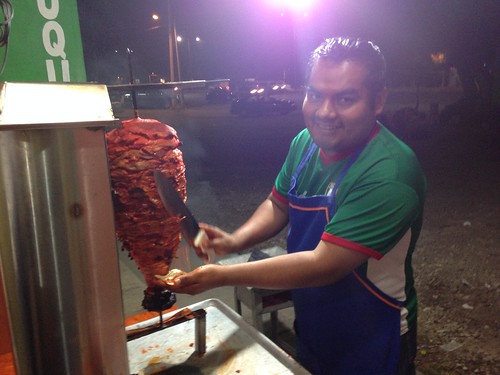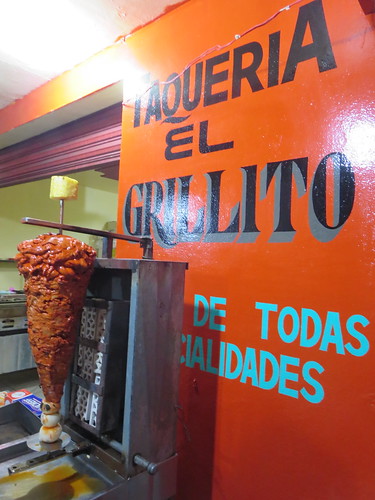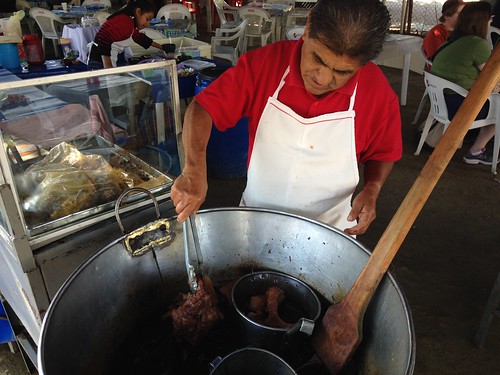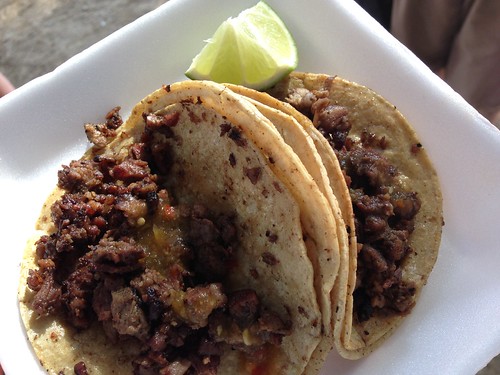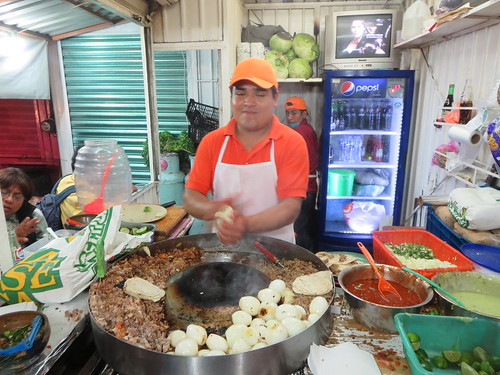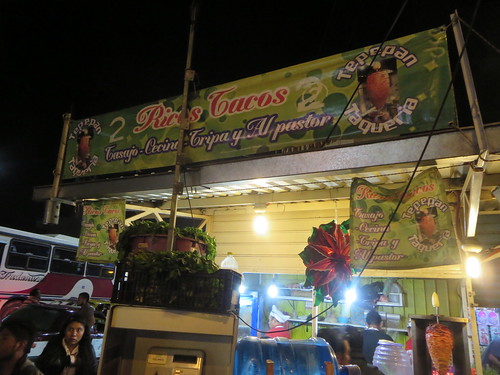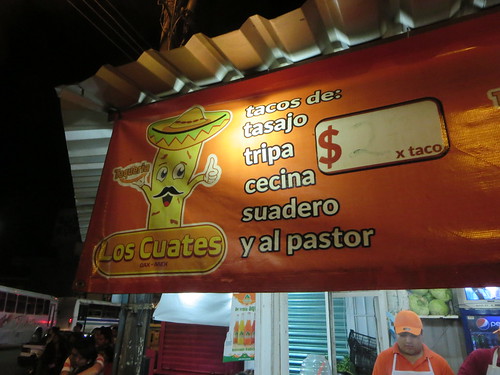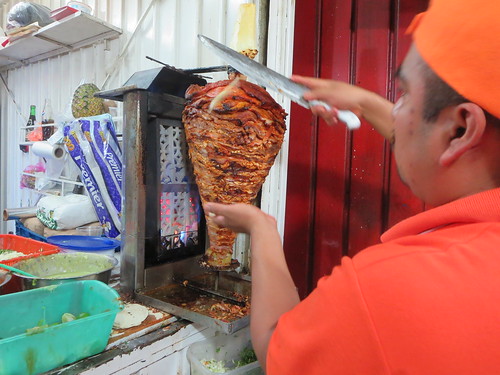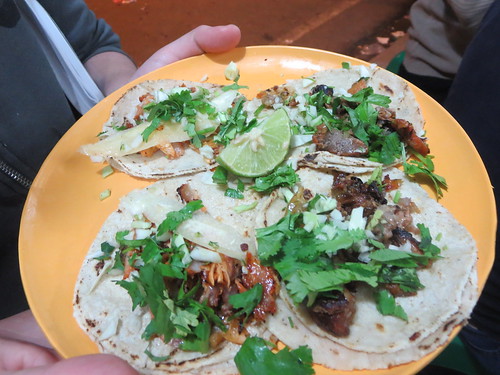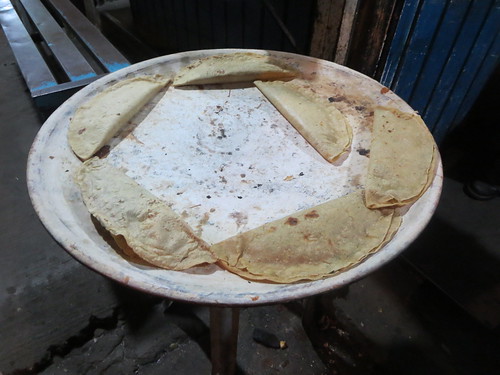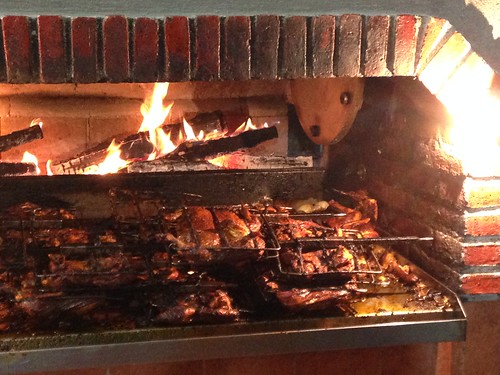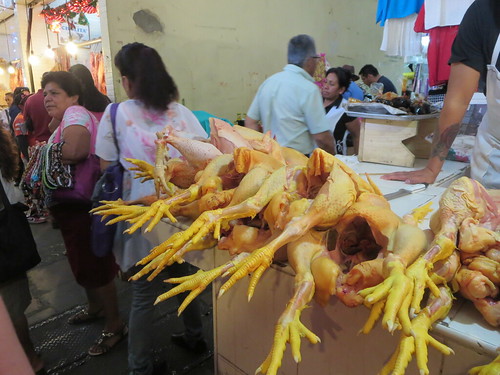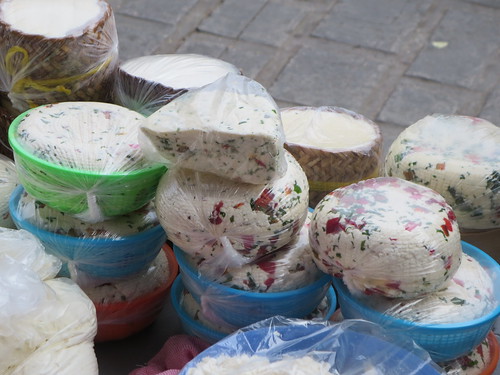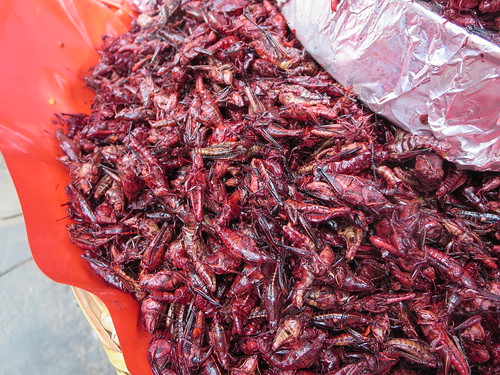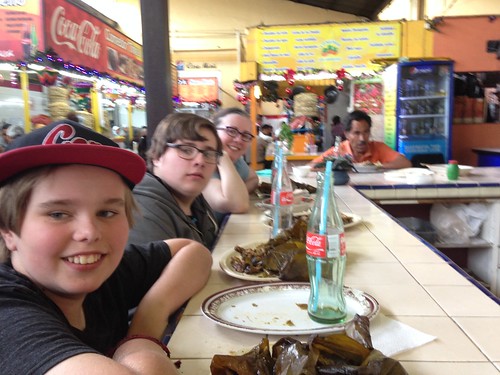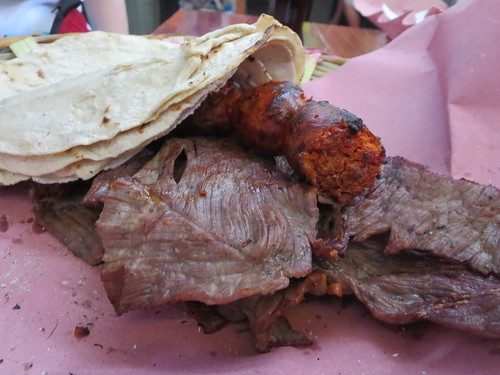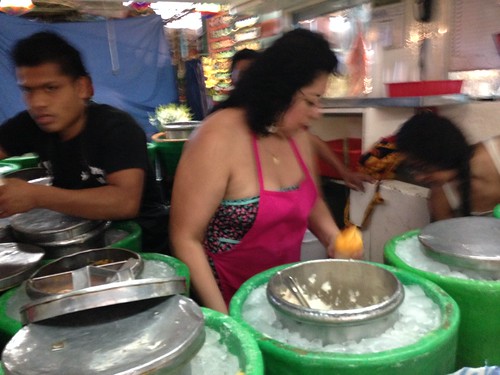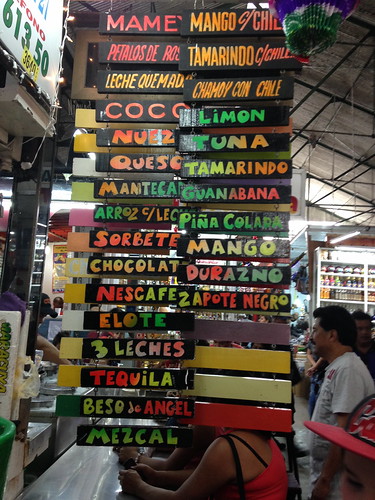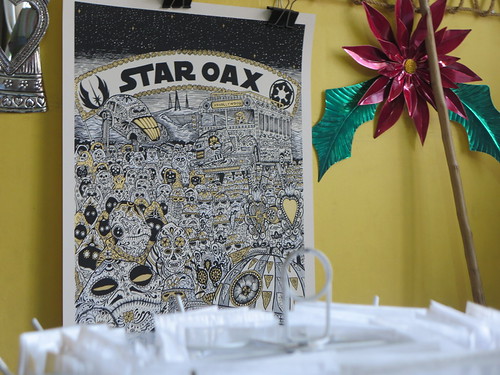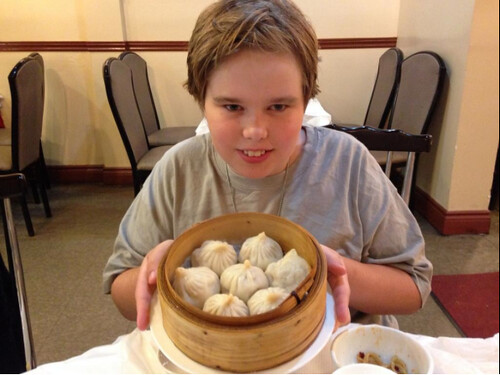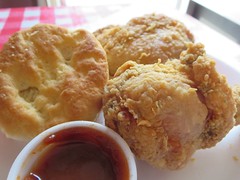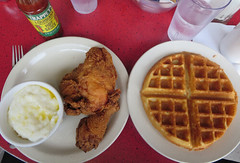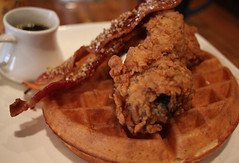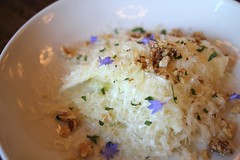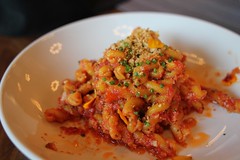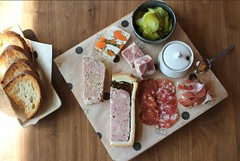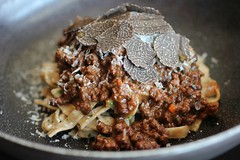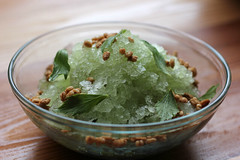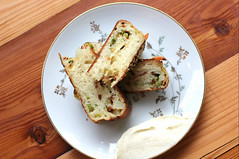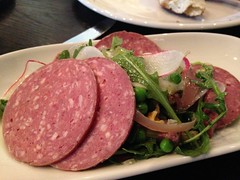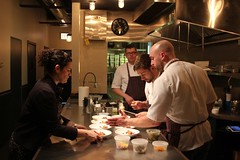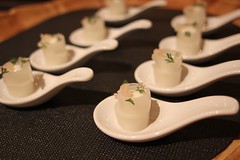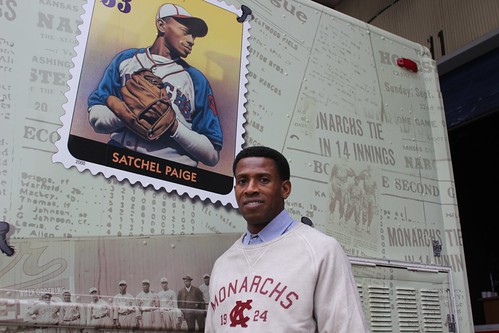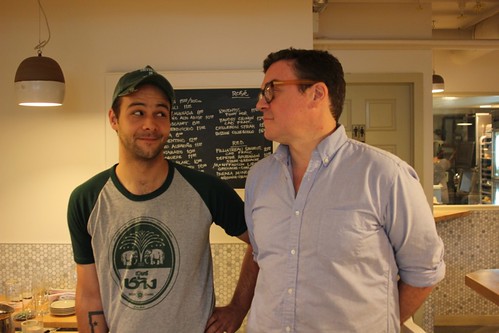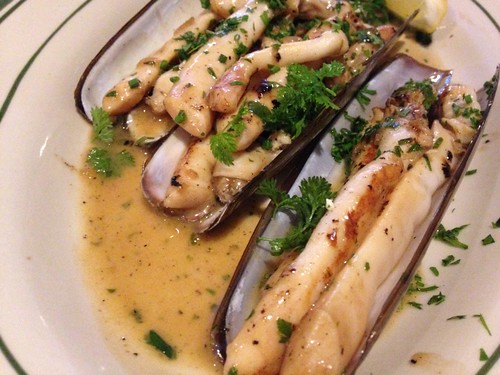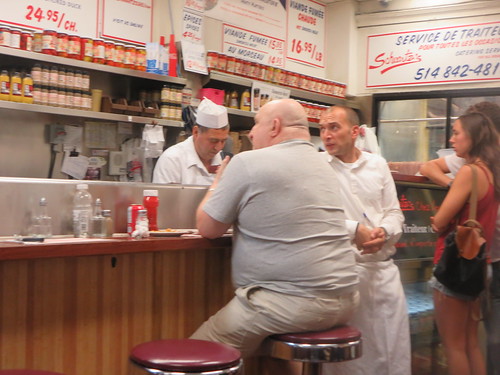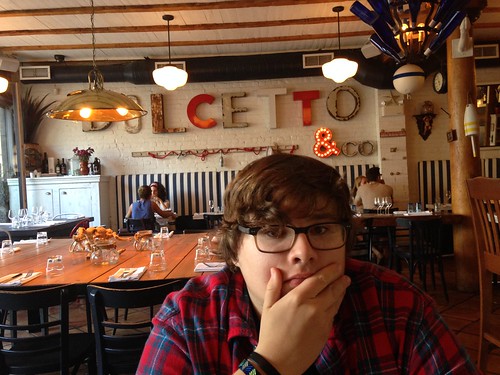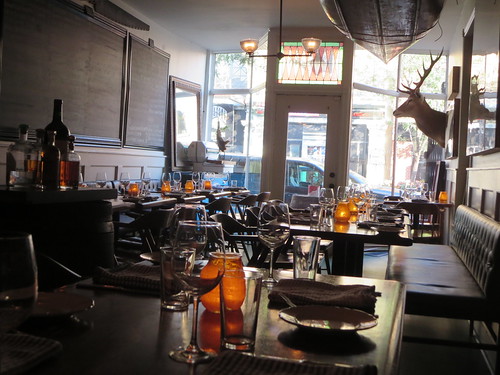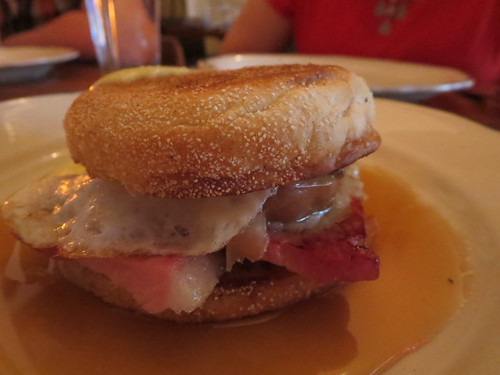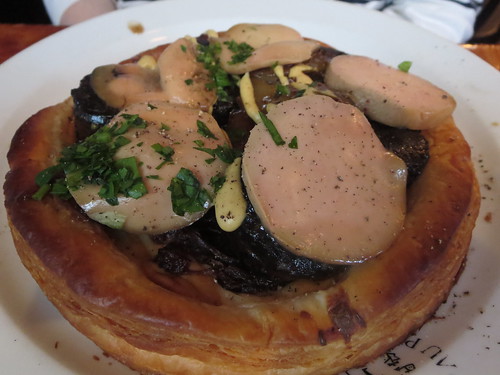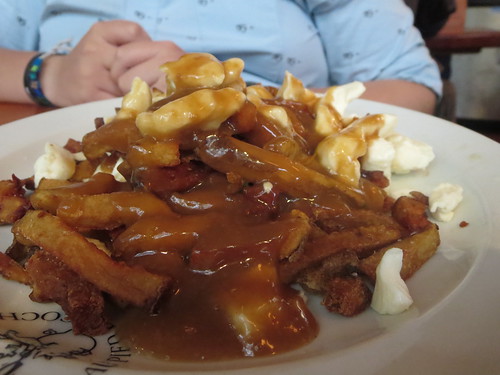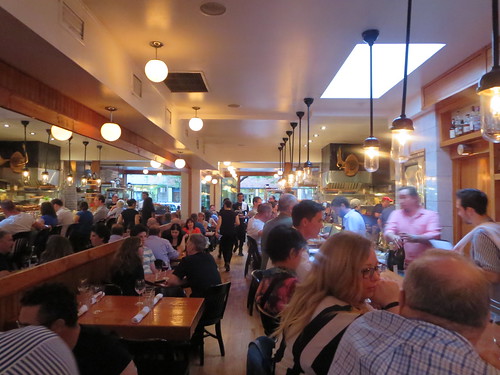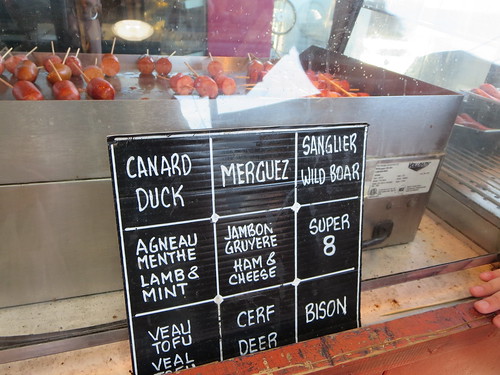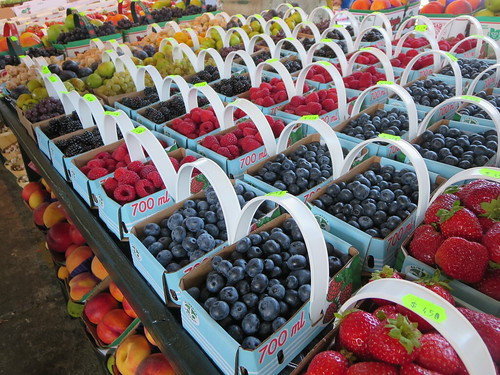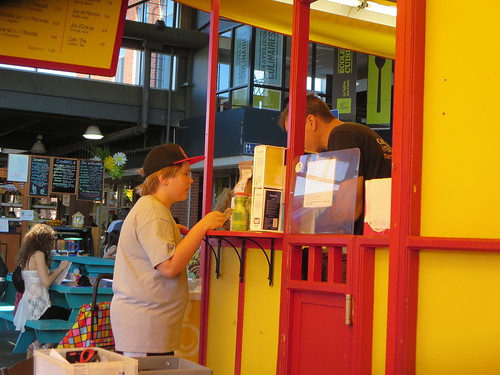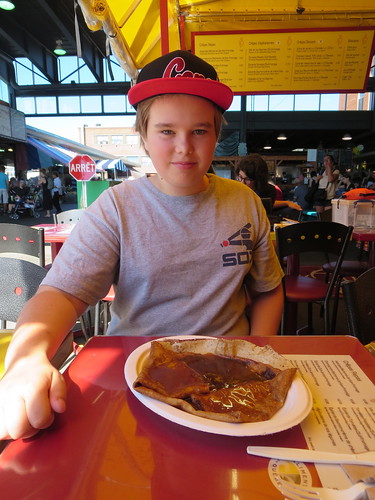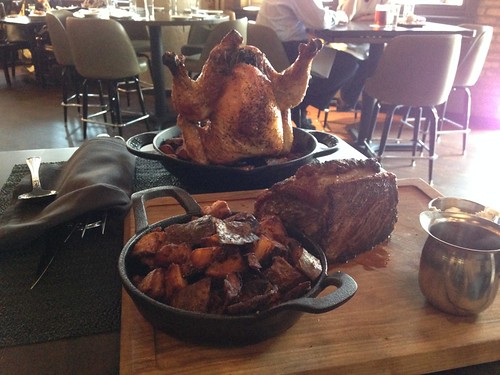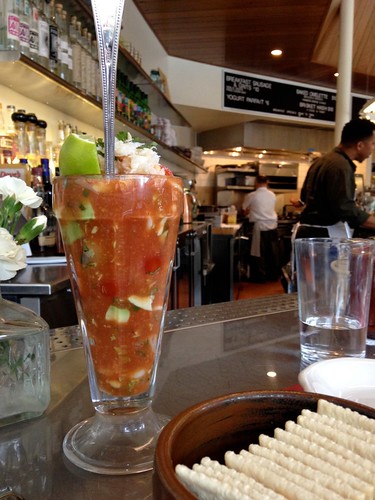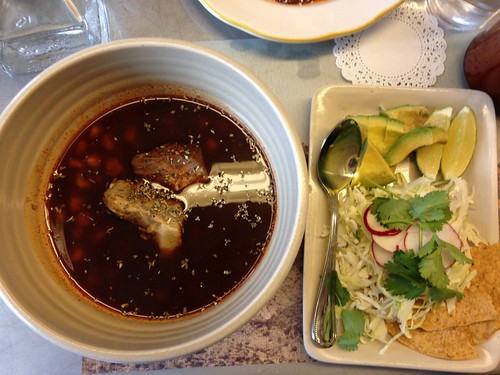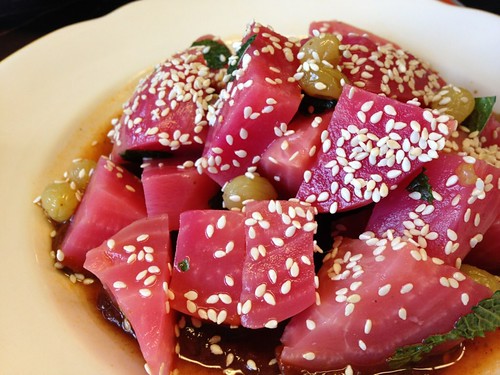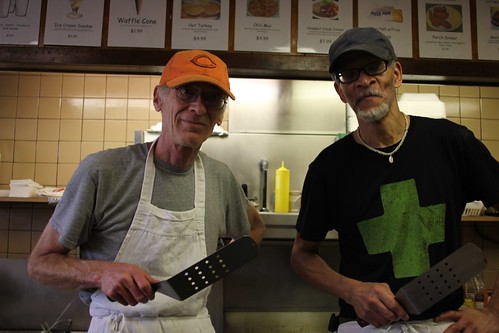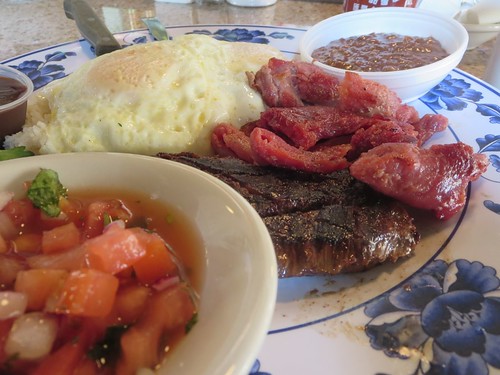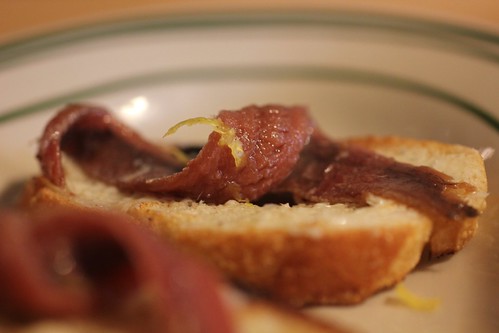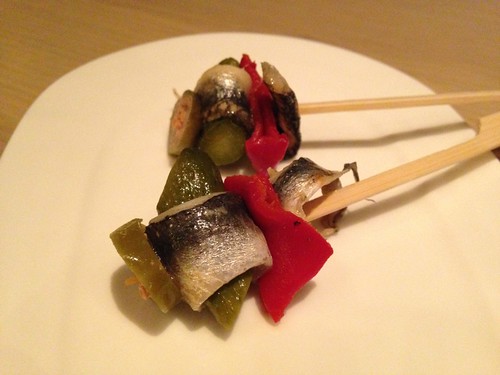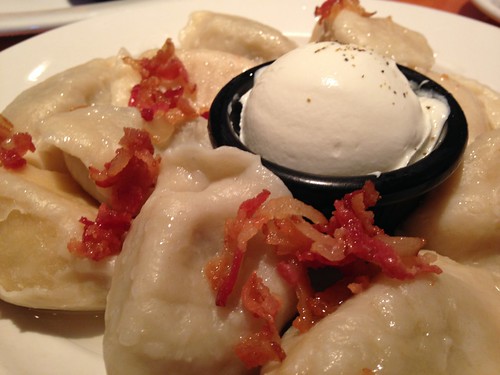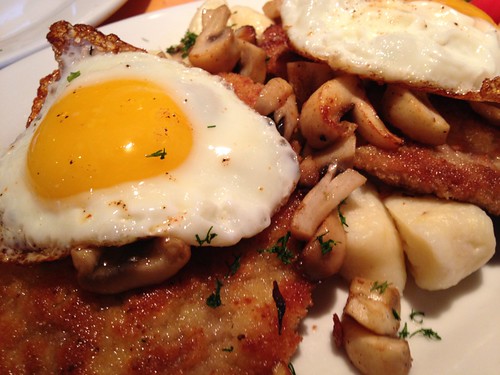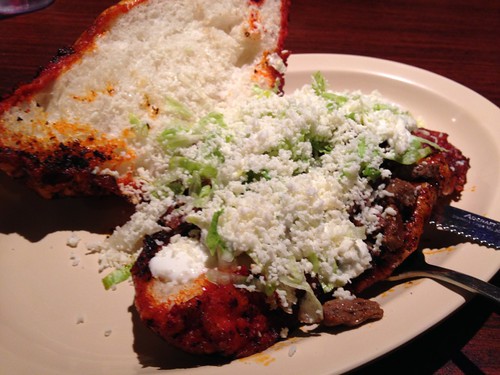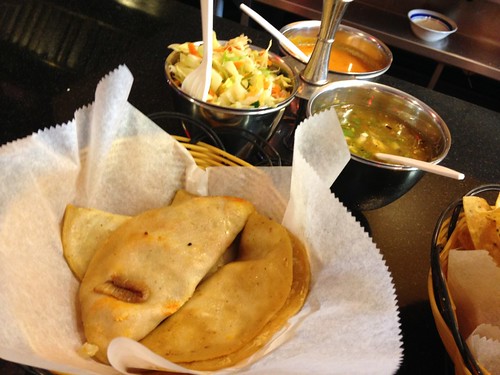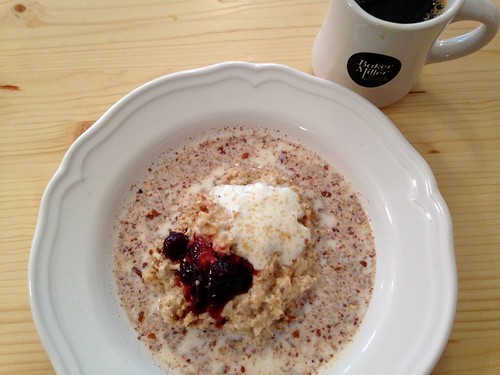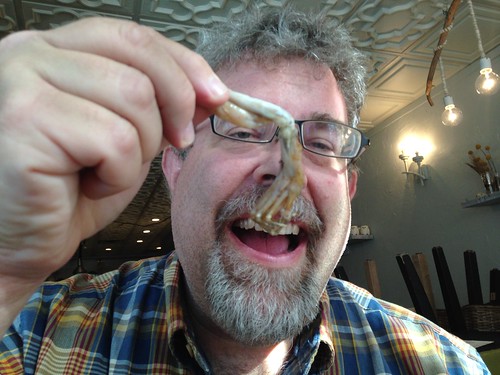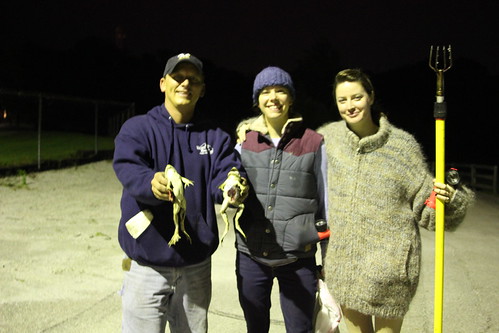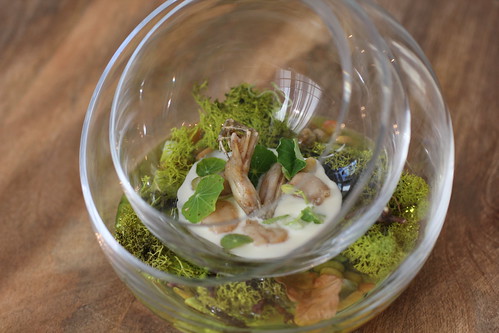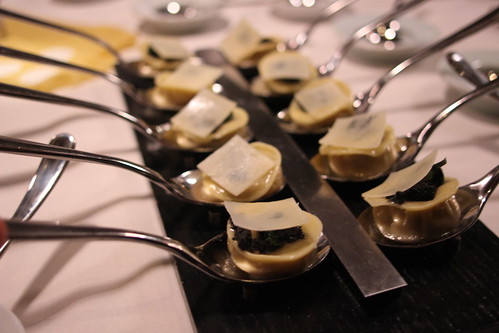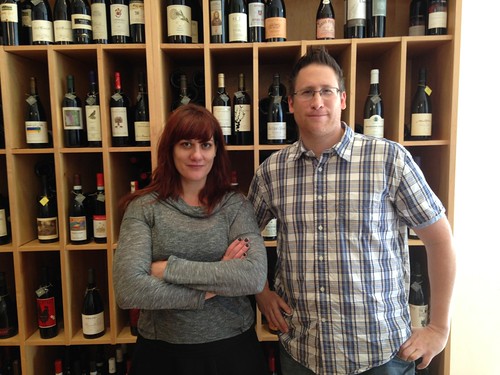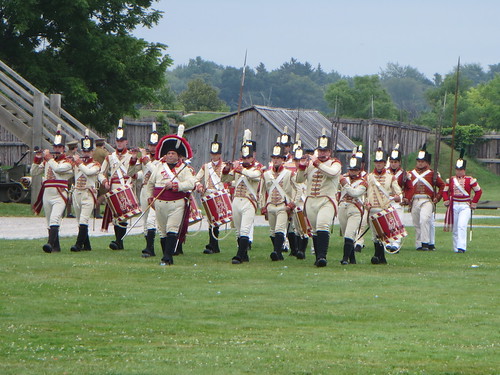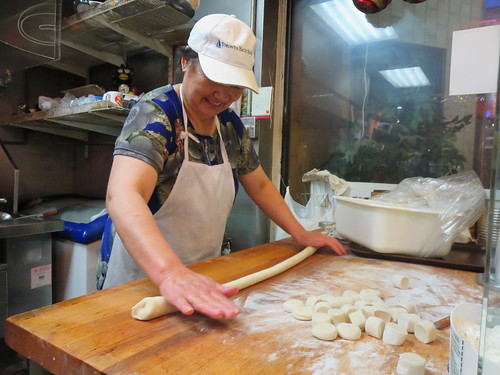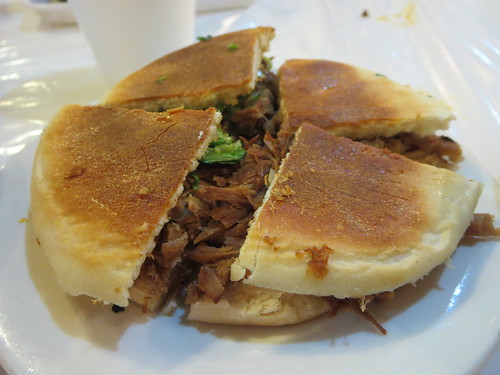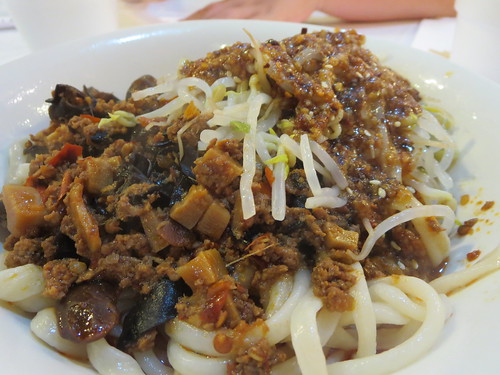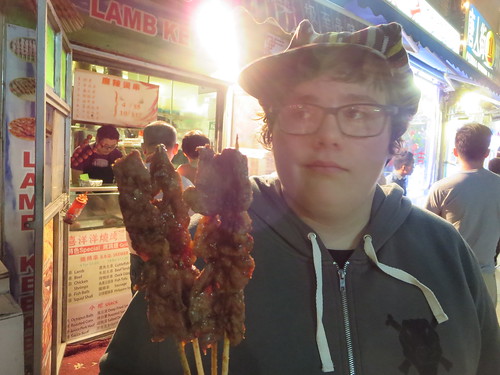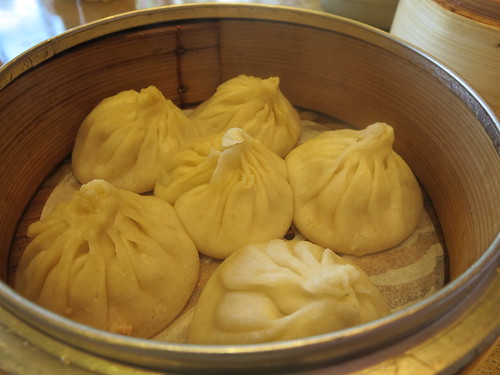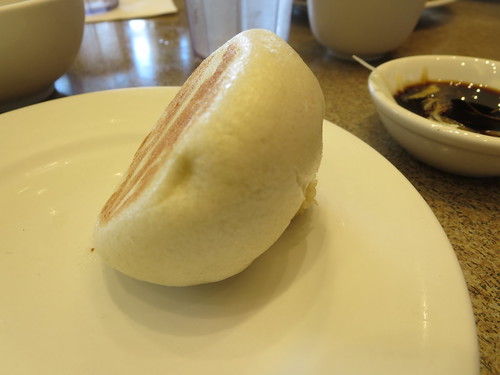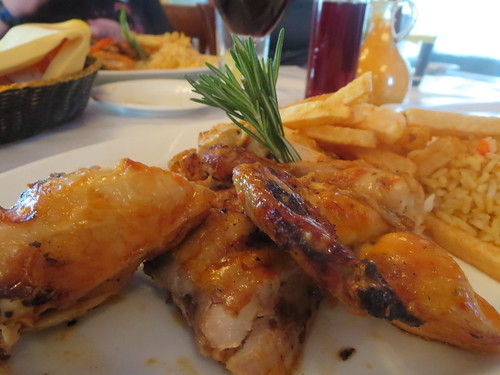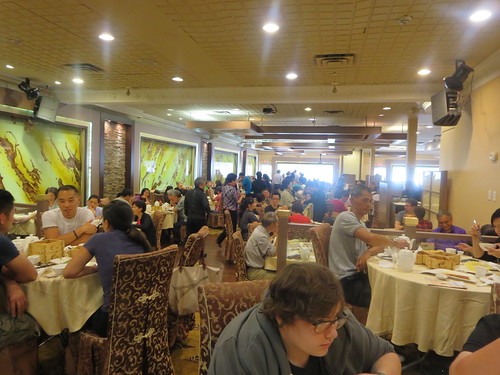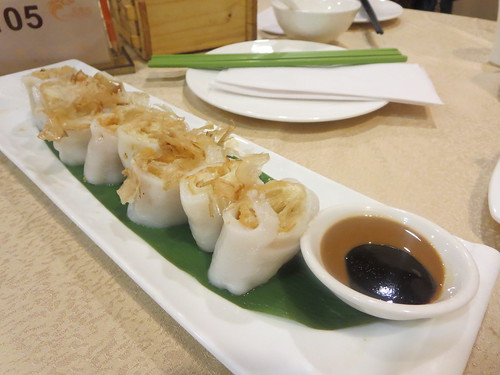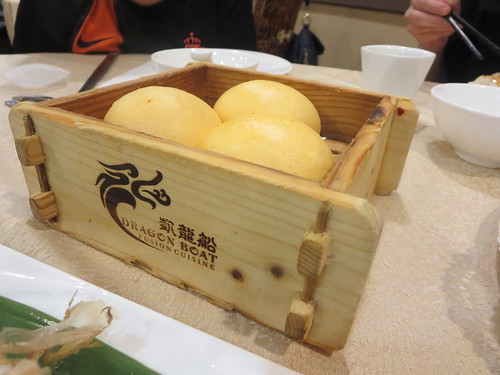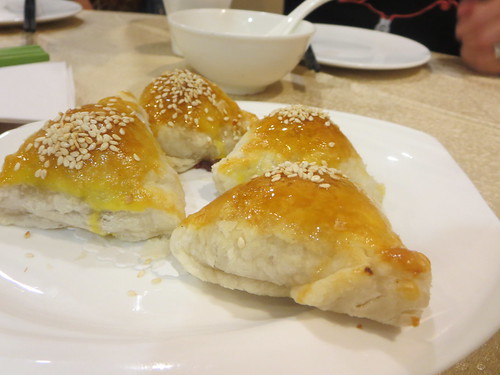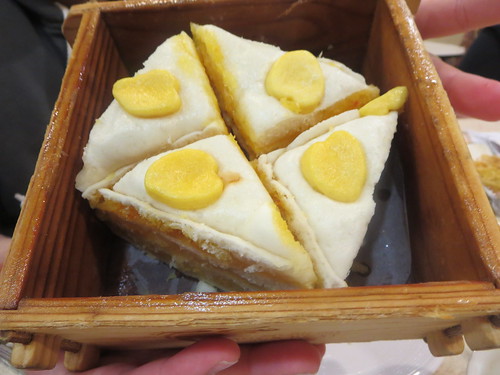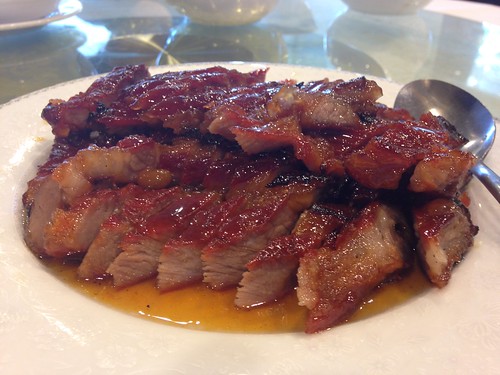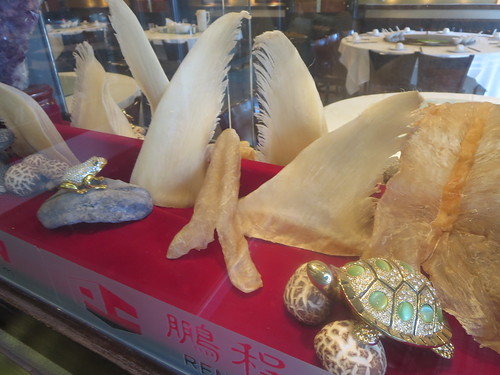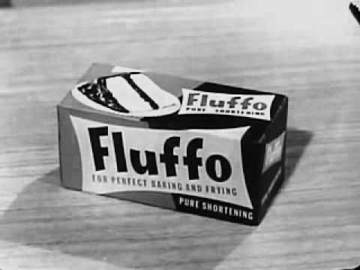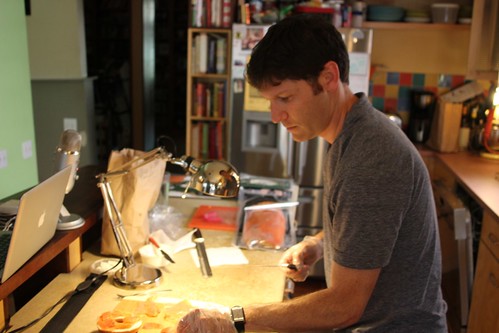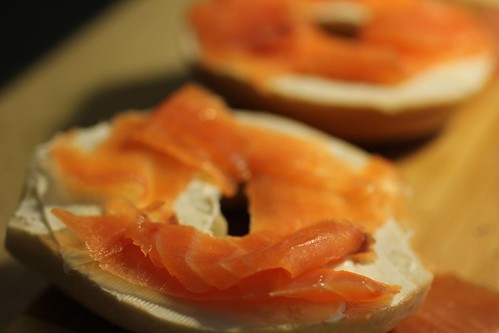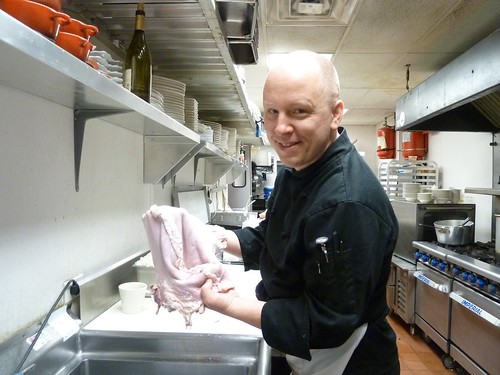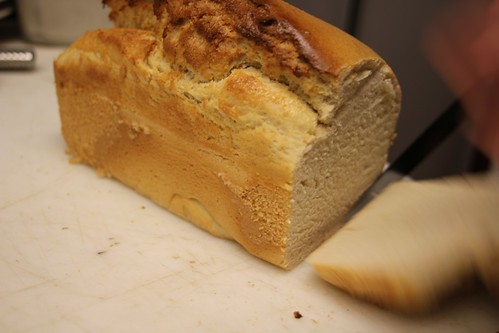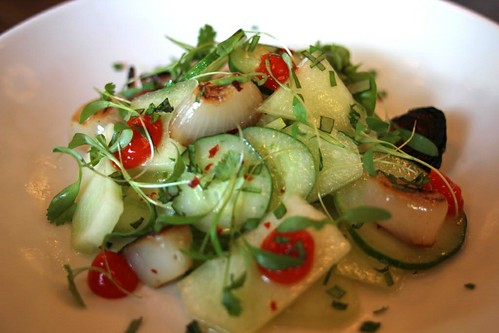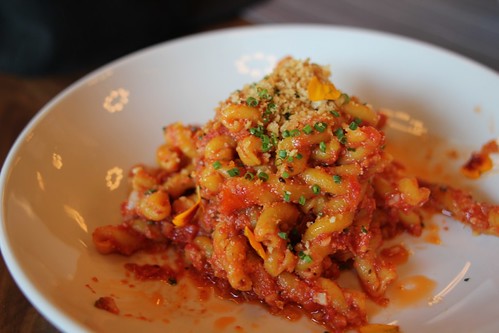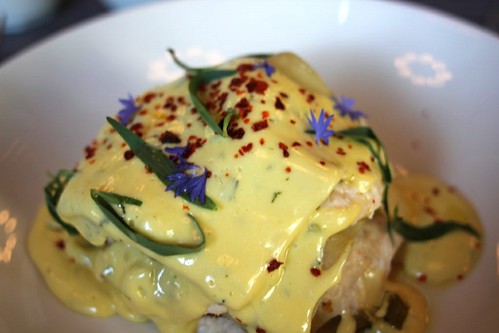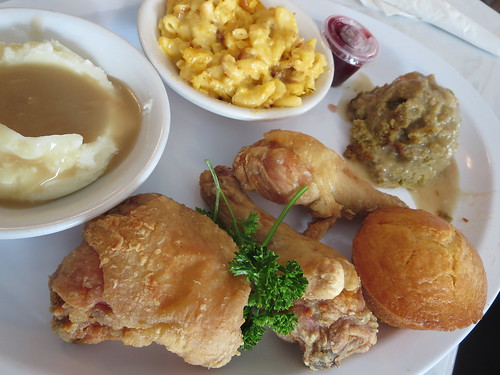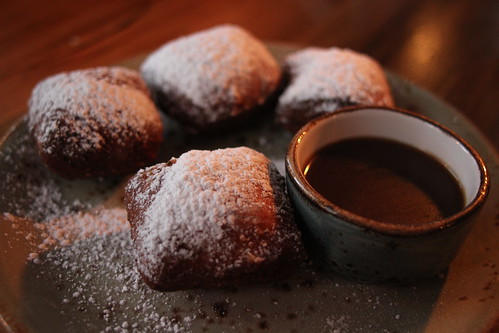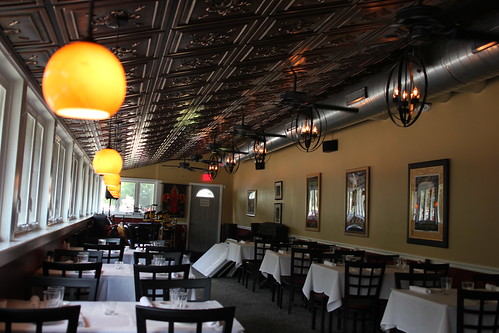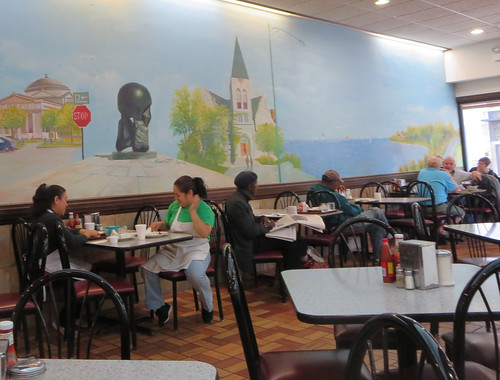
The church of Santo Domingo, with the most spectacular interior in Oaxaca.
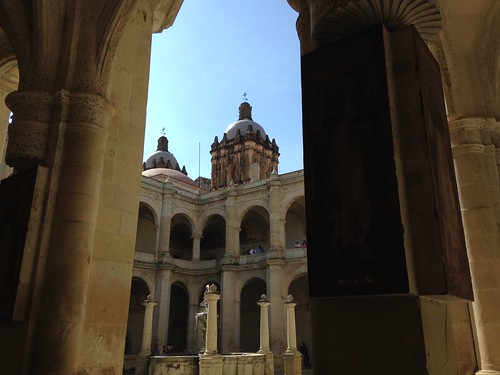
The cloister at Santo Domingo, now a terrific museum containing the major artworks from Monte Alban, the Zapotec city overlooking modern Oaxaca. We also saw an excellent exhibit devoted to the Italian publisher Franco Maria Ricci and one of his recent books.

A Nativity scene in the Zocalo in front of the protest banners about the murders of the 43 students in Mexico, by a gang allied with the mayor of Iguala. This is the kind of thing that makes you think the parts about Herod in the Nativity story probably hit home harder in some countries than others…
So we had plenty of time to eat at many levels in Oaxaca, and with my first post devoted to the low end, this one will cover off the higher end in various forms. Oaxaca apparently is convinced that it’s the next hot dining destination, or so I read somewhere, and I’ll say this for it: it may not be as polished as current dining capitols, but the prices are so reasonable that you can experiment with little fear that you’ll get ripped off. It’s hard to complain that execution is a little below Chicago standards, as judged by a pork dish fairly crudely butchered, or that service is a bit rushed at a tasting menu, when it’s going for, at most, about a third of the cost in Chicago. Restaurants here have the kind of enthusiasm that forgives a lot.
I mentioned that Rick Bayless was not far from where we were—to judge by a tweet, I missed him by about 20 minutes in the Zocalo, the central square, one day—but I already had some advice about where to eat from him, by way of Topolobampo’s chef Andres Padilla. So I made reservations in advance for two of them, Origen and Pitiona, though as it turns out, even in the tourist-heavy Christmas week it seemed like you could pretty much walk into any place in town.
The main thing was just knowing where to find them—the fine dining Oaxaca is kind of in a different area than the busy everyday tourist Oaxaca, centered on the bustling Zocalo. The restaurants around the Zocalo are, according to most guidebooks, kind of middling, but we visited one called Del Jardin a couple of times for quick meals and local atmosphere, and it was quite decent—Liam discovered a love for Oaxacan tamales here. Honestly, there’s almost no such thing as a bad mole negro in Oaxaca, though I think this one was sweetened up a little for the presumed American palate.
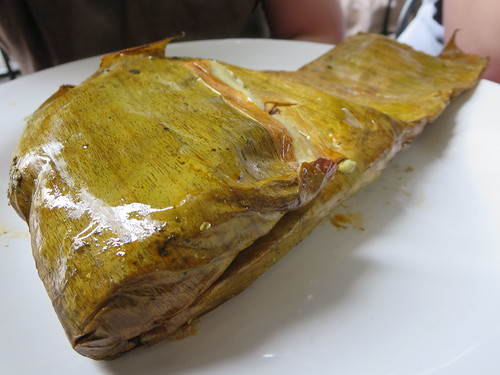
But if you want food at a higher level than that, you want to go north from the Zocalo. Just a few blocks and you hit the square around the church of Santo Domingo, which seems to also be the heart of upscale tourist Oaxaca. The square is quieter and less frantic with peddlers, all around it are better restaurants, coffee shops (otherwise often rare in Oaxaca) and the better shopping for Mexican clothing, jewelry and knick-knacky artworks. Also a very happy find in this area on some of the days were street markets devoted to locally produced goods and artworks; we picked up everything from handwoven cloths to carved figurines a cut above the usual tourist geegaws, to local chocolate and manzanilla (apple) jam.
Calle Macedonio Alcala, the main shopping street near Santo Domingo, a couple of days after Christmas.
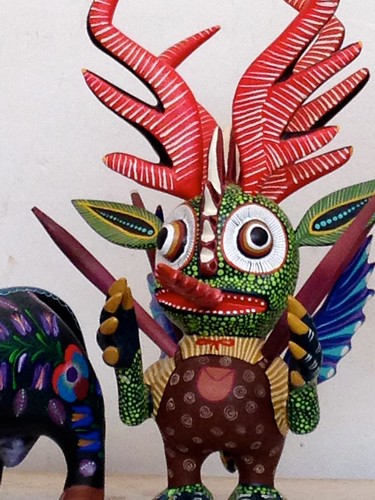
We bought several excellent carvings from this stand, though not this guy, alas.
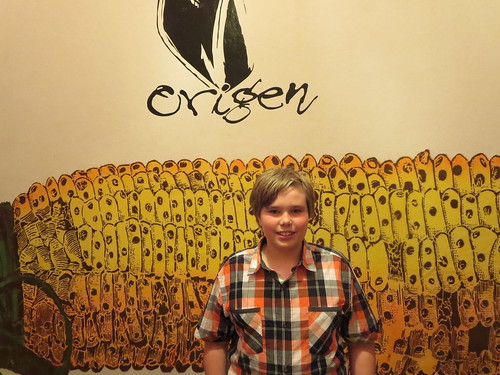
Origen is a restaurant you can certainly see people like Rick Bayless admiring, because it was the most serious about exploring Mexican flavors and not just doing a Mexican spin on continental cuisine. I couldn’t tell you what the seven moles are, but I’d bet I had more of them here than anywhere else, tasting a variety of sauces (which is all a mole is, really) in conjunction with a lot of locally grown things, from squash to quinoa. The downside was that I felt the execution level did not always match the ambition of the dishes; there were at least one dud (a charred romaine salad, which came out a neat rectangle of mushed lettuce with the consistency of a peat bog) and a very good dish of pork rib meat suffered from the meat having been roughly hacked off the bone, fat untrimmed. Still, at about $130 for 4 people it was a creative meal offering a lot of insight into Mexican flavors we didn’t get elsewhere, and I would recommend it.
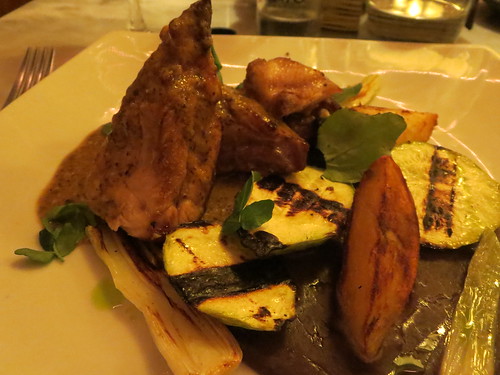
Pork rib meat with chicatana sauce, yucca and squash.
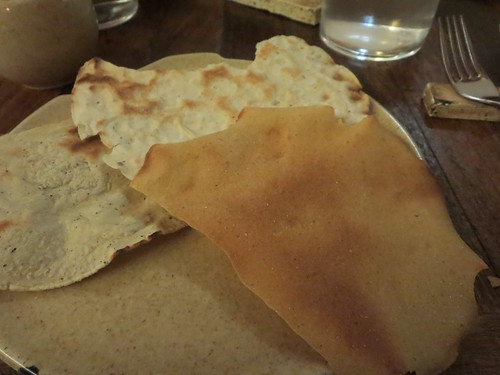
Tortillas at Pitiona made of different kinds of corn—the top one made with agave (in some form).
Pitiona was in some ways less adventurous in cuisine, but moreso in form—the chef worked at El Bulli and there was a lot of Adria-esque playfulness in the form of the dishes, and as the first full-fledged tasting menu for the kids (Myles and I went to Ing once, but that’s it) everyone had a good time waiting to see what they’d bring out next—usually, curiously, plated on something the shape and size of a brick, like the paint-covered block this plantain fritter arrived on.

Highlights included a venison taco, another with tocino (pork belly)…
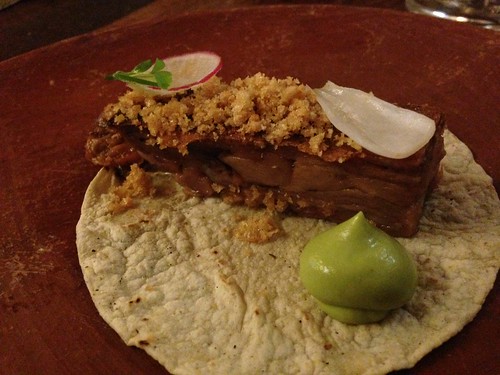
and the most El Bulli-like item of the night, a tomato noodle soup with a spherical ball of cream in it, which you broke and stirred into the soup.
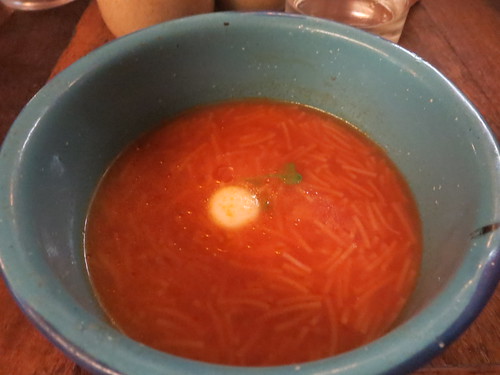
The meal was fun, the restaurant which rambled over several rooms of an old colonial era house was charming, the only downside here wasn’t execution but service, which raced through the meal and couldn’t wait to remove any plate that seemed possibly finished. I’m not sure what the cause of that was—it seemed unlikely they were desperate to turn the table. I think the kitchen probably wasn’t pacing it as well as they should and the servers were scrambling to make it work. Nevertheless, I’d recommend Pitiona too; not to dwell on price here, but $300 for four compared to the $500 and up for two you’d pay in the U.S. for a tasting menu goes a considerable ways toward covering your airfare to dine like this.
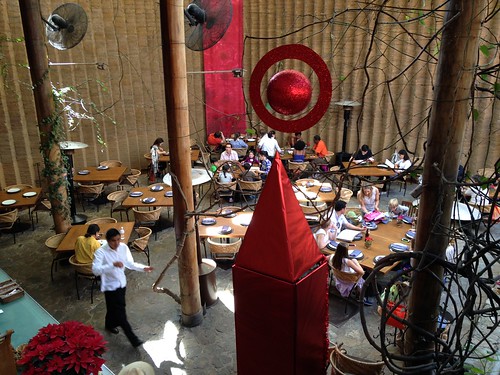
I hadn’t planned to eat at Los Danzantes, named (somewhat macabrely) for the most famous carvings at Monte Alban, of captured, castrated rival chiefs, but on the last day before our evening flight, it was right there and seemed like just the place to kill 2 hours at lunch. Which it was; the room could not be more dramatic, surrounded by three-story concrete walls with a catwalk wandering through foliage to a lounge and the bathrooms. Choose your own movie descriptor for this space—Bond villain HQ, the wall of Kong, no matter what, it was undeniable spectacle. (I especially loved that the bar turned out to be made of cars crushed into cubes. Wild!)
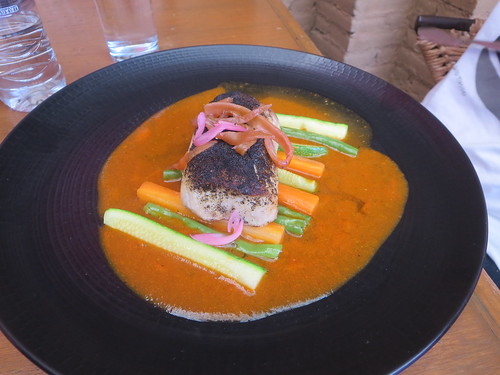
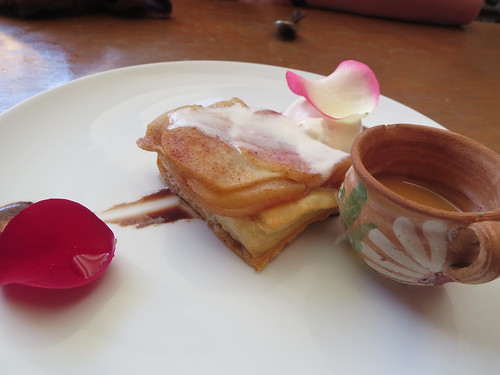
The food would have trouble living up to this and despite a Slow Food designation and a high rating (from Americans, presumably) on TripAdvisor, it wasn’t as artful or intriguing as Origen or Pitiona, tasting more like upscale Mexican flavors on American-style dishes. An appetizer of duck with Mexican spices was best, a white ocean fish rubbed with ash and Myles’ steak were fine, but something advertised as somebody’s grandma’s mole rojo didn’t have the kick or funkiness you’d hope for. This was the first that seemed more tourist-oriented than a local expression, but still, a grand setting from which to salute Mexico and say goodbye with a daytime drink in hand.
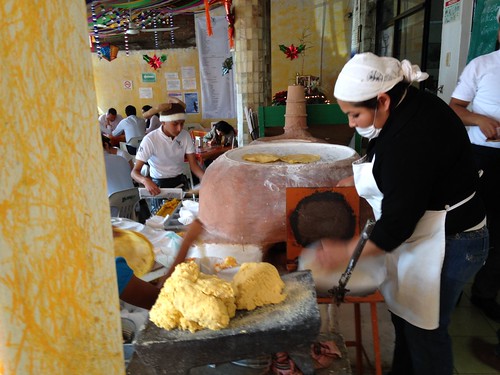
Other than taxis taking the shortcut over the hills, Itanoni marked my only venture even further north, into a neighborhood near the Park Llano that seemed sort of like the Upper West Side of Oaxaca, plenty of upscale shops and a relaxed air. Itanoni wasn’t nearly as upscale as the places above, but Alice Waters is said to have called it her favorite restaurant in Oaxaca and it’s easy to see why—it’s very serious, almost curatorial, toward the tortilla and what goes in it, dividing the menu by different kinds of corn from different microclimates, and the fillings specific to those (micro) regions— which you order like dim sum, checking them off on a sheet. (That said, my main inspiration for going here was less Alice Waters than Nick Kindelsperger and what he had to say about it here.)
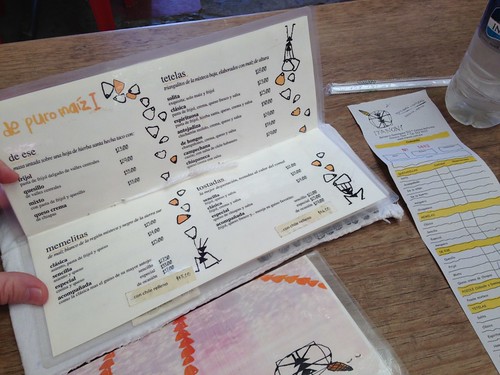
Could I really taste the difference in tortillas made by hand between corn grown on the mountains and corn grown on the isthmus? No, but everything bespoke really careful craftsmanship, everything tasted clean, the way Rick Bayless’ Mexican food often does, and when I peeled open this flor de la calabaza tortilla to see its gorgeous petals inside, I felt like the peasant Juan Diego when the image of Our Lady of Guadalupe was found on his cloak.
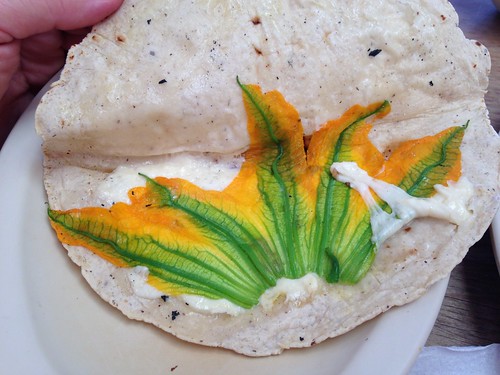
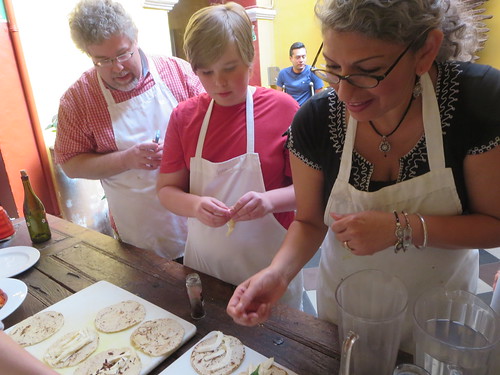
One last food experience, which both kids would rank among the best things we did on the trip. Belatedly I had the idea of doing a cooking class for the four of us, and found this blog post which talked about five popular classes. A couple were booked all week, one didn’t respond to the email form I sent through its website—and then I saw Casa Crespo as we were walking to Santo Domingo from the bus, across the street from Pitiona.
It was an American crowd doing it, save for one Swedish woman, including a couple from Logan Square—who asked me if I knew Grandma J’s in Humboldt Park. Talking to another couple, a police officer from L.A. and his wife, they mentioned a recent trip to Chicago and how they liked going to places on Diners, Drive-ins and Dives—and said they’d been to Cemitas Puebla. I told them I’d had comments from Tony Anteliz, its owner, in response to my Tweets about this trip.
Anyway, we started off by going to a nearby mill to grind the corn for our tortillas, and then to the Sanchez Pascuas organic market to shop for ingredients (and sample some fruits you can only find in Mexico, like black zapote, which is like a plum filled with squid ink).
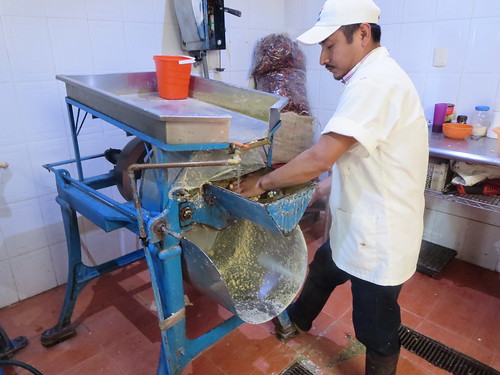
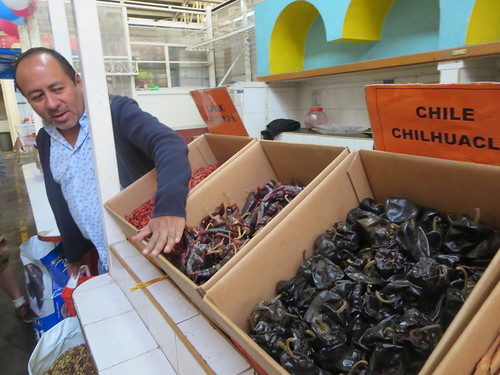
Back at the school, we began making an ambitious lunch ranging from handmade tortillas stuffed with cheese, flor de la calabaza and other ingredients, to chicken with mole, a cold avocado soup, and chocolate ice cream. I was really happy that the kids got into it and were proud of what they contributed to making. Gotta do more of that at home. It was a tasty lunch and a great experience.
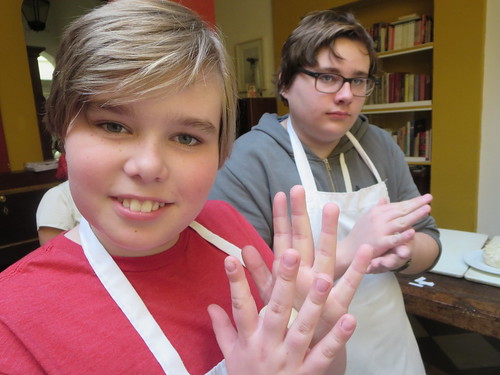
And after working themselves up to it for most of the week, they tried bugs. At least, Myles put chapulines, grasshoppers, in his tortilla, while Liam at least tasted a salsa that had agave worms ground into it. Dad was proud.
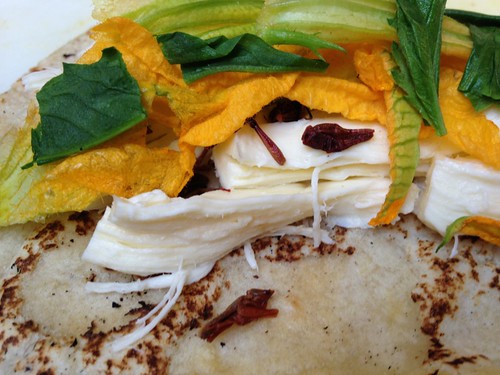

A couple of final notes:
• Coffee. We didn’t have a coffeemaker in our villa so getting coffee before too much of the day had passed was a constant struggle. The only places serving anything like American-style coffee seemed to be in the touristed area between the Zocalo and Santo Domingo, so I pretty much had to be in one of those areas by lunchtime; finding caffeine in the rest of the city could be very hit or miss, or at least require you to sit down for a substantial breakfast to get a cafe con leche (not a fan, but it’ll do in a pinch). I relied mainly on two Italian-style chains, Cafe Brujula and The Italian Coffee Co., with multiple locations in this area.
• Baked goods. One thing I’ve never been wild about is Mexican baking. Mexicans can make really nice French pastries, but their own styles seem bland and flavorless to me, and it was disappointing to see so much of it in the markets and never find anything particularly good. The Italian-style coffee shops were your best bet for sitting down with something to nosh on; buying in quantity, the best French style pastries we found were just west of the Zocalo on Independencia at Pasteleria Carmelita, while we got a nice panettone and some crusty bread for Christmas at Pan & Co. near Santo Domingo.
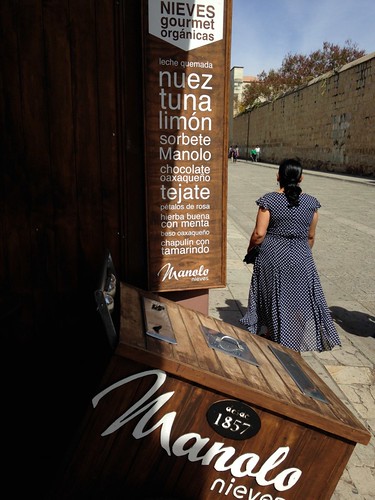
• And one more ice cream place, just north of the Santo Domingo plaza: Manolo Nieves. This place had a somewhat unfriendly system— you had to order the quantity you wanted and pay for it, then tell them what flavors you wanted— but the flavors were top notch, a simple vanilla was terrific with burnt sugar notes. I had a rose petal one, which I knew I wouldn’t like but it was recommended by a woman there, Spanish or Italian or something, and as someone who gives a lot of advice, I sort of felt I had to take it. I’m still not a huge fan of rose flavor, but it was probably the most I’ve ever liked any thing rose flavored. By the way, tuna is not tuna ice cream—it’s prickly pear.
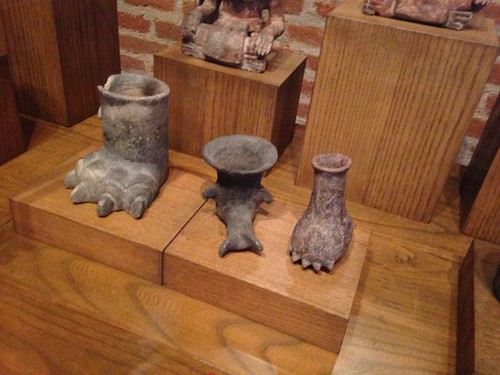
Zapotec foot bowls, in the museum.



 Posted in
Posted in 
